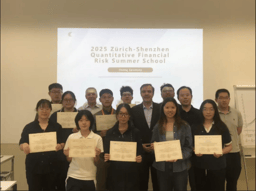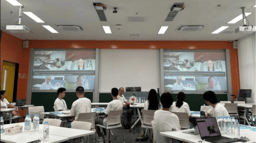LIA Stage 1: From Financial Literacy to Life with AI--The Spark and the Planning

From Financial Literacy to Life with AI: The Spark and the Planning
When I was 16, I began thinking seriously about how to help children who didn’t have the same privileges I did. I wanted to give them tools to imagine — and eventually build — a better life. My first idea was simple: a financial literacy club, designed in collaboration with charities, where disadvantaged children could learn how to save, budget, and invest. Around the same time, I also came up with another idea, something broader in scope: Life with AI. This was meant to explore how artificial intelligence would reshape education, careers, and life itself.
At the beginning, these two tracks — financial literacy and Life with AI — were separate trails of thought. I never imagined they would merge into something larger.
Finding SUSTech
The turning point came when I was brainstorming for the LiA program, at first I was contacting charity institutions on simply improving financial literacy for disadvantaged rural children, a friend suggested that I contact SUSTech (Southern University of Science and Technology). At first, I was hesitant. What would a major university see in a student’s project idea? But when I shared my experiences and vision, their reaction surprised me: they were deeply interested.
SUSTech didn’t just want to support the idea — they wanted to expand it. They saw the potential of combining financial literacy with Life with AI into a career discovery camp, something that would not only benefit underprivileged children but also inspire students to pursue AI-related paths. They also had their own institutional interest: cultivating young talent who might later contribute to their AI program.
This was a pivotal moment. What had started as two small ideas suddenly became an international program. SUSTech offered to provide classrooms and accommodation in Shenzhen, and — even more remarkably — connected me with ETH Zurich, one of the world’s leading universities, to host a parallel program in Switzerland focused on AI and quantitative finance.
Building the Vision into Reality
That was the dream. The reality was harder.
Around 300 students applied to each camp, but in the end we admitted about 50 per camp. The selection process itself was a challenge: balancing inclusivity for underprivileged backgrounds with academic readiness, while making sure the students we chose would genuinely benefit from the program.
The next hurdle was teachers and curriculum. In total, I recruited around 15 teachers — a mix of university professors and industry professionals. Some came from AI and finance backgrounds, while others worked in music, art, design, technology, or science development, using AI in creative and innovative ways. We wanted the curriculum to be interdisciplinary, so we designed a blend:
-
Lectures by professors and executives (including people from UBS, insurance, and digital currency fields).
-
Company visits, like Apex (quant trading for energy in Europe) and Lexin (AI-based credit evaluation in China).
-
Hands-on projects, where students could pitch entrepreneurial ideas or design simple strategies. One student even created a basic trading algorithm that yielded 13% in a month.
The Logistics Behind the Scenes
Planning wasn’t glamorous. It meant hours of emailing hotels, negotiating canteen cards, confirming classroom reservations, and arranging group visas.
What made it especially difficult was that I was organizing international logistics remotely. I had never been to Switzerland, but I was responsible for arranging accommodation, museum visits, and classroom bookings in Zurich. I had to rely entirely on online research, contacts, and faith in the people on the other side of the time zone. Coordinating across China and Switzerland meant that messages and decisions often lagged by 6–12 hours. What seemed like a small adjustment in one country became a whole day’s delay in practice.
At the same time, I was overseeing admissions and promotions — making brochures, reaching out to students, and trying to build credibility for a brand-new program. Teachers didn’t confirm all at once, either. Some were secured six weeks before the camp, but others only finalized their participation one or two weeks before we started.
Leadership Under Pressure
It was during this phase — long before the camps even started — that I felt the real leadership challenge.
I had to:
-
Balance two distinct goals: teaching underprivileged children financial literacy and preparing advanced students for careers in AI and finance.
-
Manage expectations from multiple stakeholders — students, teachers, and universities — each with their own priorities.
-
Trust my planning in places I had never physically visited, hoping that what I arranged from afar would work smoothly on the ground.
-
Hold the vision steady while juggling hundreds of small moving parts.
There were moments of doubt. Would students actually come? Would the teachers cancel last-minute? Would I be able to hold everything together? But every time I questioned myself, I reminded myself of the bigger picture: this wasn’t just about one camp, but about opening doors for students to imagine futures they might never have considered.
Looking Ahead
By the time the Shenzhen and Zurich camps finally started, I realized that the hardest part was already behind me. The preparation — the planning, persuading, promoting, and problem-solving — was the crucible that tested my resilience and commitment.
The camps themselves were a different story, with their own unique challenges and insights. But those three months leading up to them taught me one of the most valuable leadership lessons I’ve ever learned: vision only becomes reality when you’re willing to do the invisible, unglamorous work to make it happen.



Please sign in
If you are a registered user on Laidlaw Scholars Network, please sign in